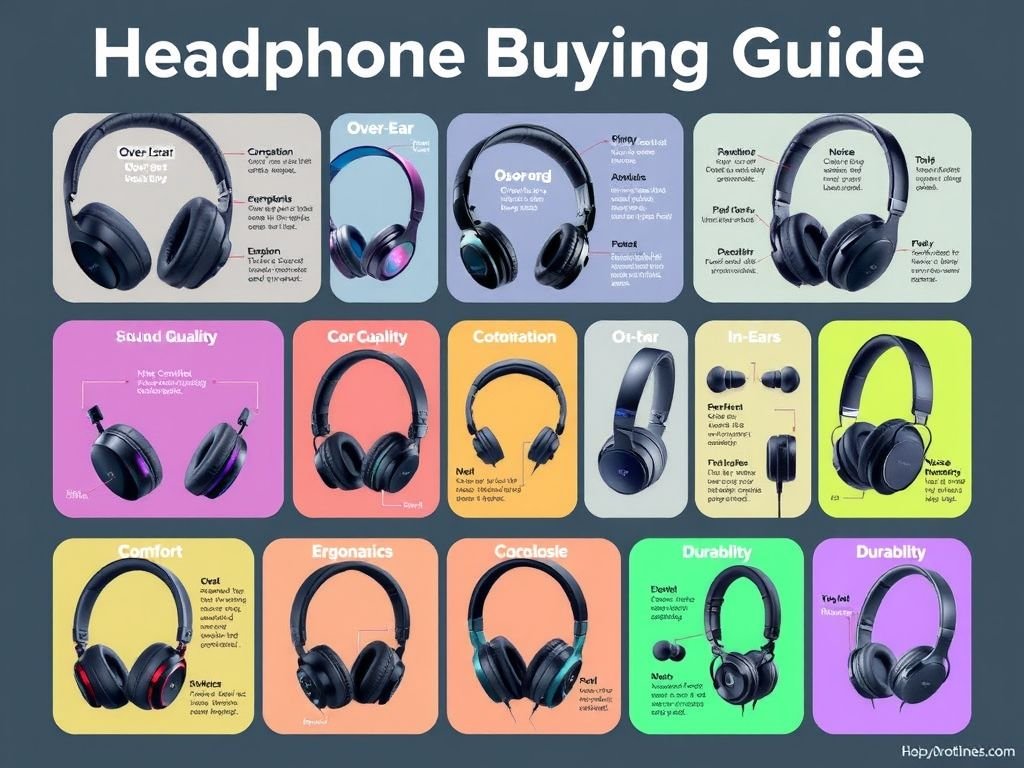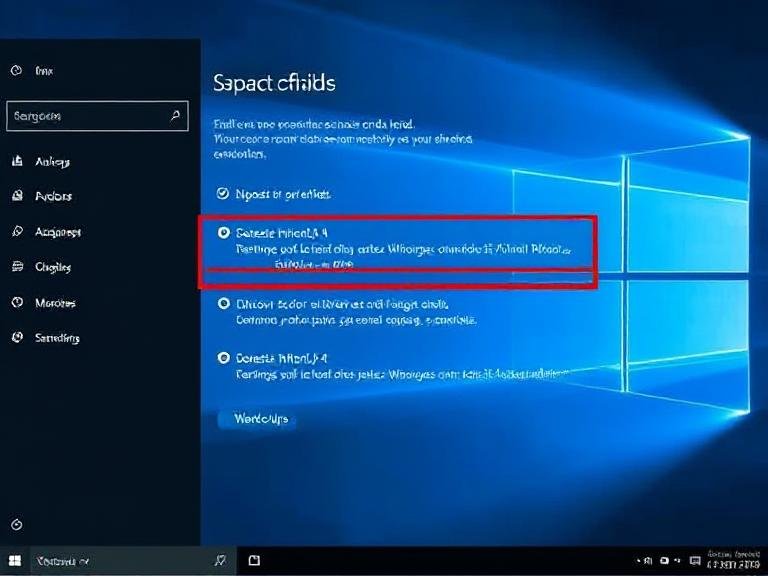
Headphone Buying Guide: How to Find the Perfect Pair for Your Lifestyle
We’re more connected than ever — listening to music during commutes, taking calls from home, or tuning into podcasts while working out. For many of us, headphones aren’t just an accessory. They’re a daily essential, almost like a second set of ears.
If you’re still using the same flimsy pair you got for $10 at a gas station years ago, it might be time for an upgrade. Today’s headphones come in all shapes and sizes, from tiny wireless buds that vanish in your pocket to full-sized over-ear models that deliver studio-quality sound.
And while Bluetooth dominates the market, wired headphones still have their place — especially if you care about pure audio quality.
At review labs like Consumer Reports, more than 200 headphone models are tested every year. They’re evaluated not just for sound, but for comfort, durability, battery life, and real-world usability. But here’s the truth: the best headphones for you depend on how you use them — not just the specs.
In-Ear, On-Ear, or Over-Ear? It’s About Lifestyle
Your ideal headphones should match your routine — whether you’re jogging, working, traveling, or relaxing at home.
Some people own multiple pairs for different situations: lightweight earbuds for the gym, noise-canceling over-ears for flights, and a basic wired set for calls. Others stick with one trusted pair all day, every day.
There’s no right or wrong way to use them. You’ll see runners with bulky over-ear headphones and office workers watching movies with tiny earbuds. The key is finding what works for you.
Small and Portable: When Convenience Comes First
When we say “portable,” we usually mean in-ear headphones — compact, lightweight, and easy to carry. These slip into your pocket or bag and go wherever you go.
- Wired earbuds: Simple, reliable, no charging needed. Great for quick calls or listening on older devices.
- True wireless earbuds: No wires at all. Just two small buds that connect via Bluetooth. Super popular for workouts, commutes, and everyday use.
Many come with multiple ear tip sizes to help you get a secure, comfortable fit. A good seal also improves sound quality and helps block outside noise.
Best for: Travel, exercise, phone calls, and anyone who values simplicity and mobility.
Big and Immersive: Where Sound Quality Shines
Larger headphones — the kind that sit on or over your ears — are built for serious listening. They often deliver richer bass, clearer vocals, and a more spacious soundstage than smaller models.
These are sometimes called “home” or “studio-style” headphones. Many fold up for storage and come with carrying cases. While they’re bulkier, some people find them more comfortable for long listening sessions — especially if they don’t like having something stuck in their ears.
They’re ideal for:
- Listening to music at home
- Working in a quiet space
- Watching movies or editing audio
- Blocking out distractions with noise cancellation
How to Choose Based on Sound Quality
Sound is personal. Some people love deep, punchy bass. Others prefer a balanced, natural tone that lets every instrument and voice shine.
In professional testing, experts listen to the same high-quality tracks on every pair — music that highlights different parts of the audio spectrum, from deep drums to soft vocals and complex arrangements. They compare each model to reference headphones with known performance levels.
The goal? To find how accurately the headphones reproduce the original recording — not how loud or “exciting” they sound. The best models deliver clean, detailed audio with minimal distortion, so you hear what the artist and producer intended.
But here’s the thing: you should trust your ears. If possible, try before you buy. If shopping online, make sure the store has a solid return policy.
Wired vs. Wireless: What’s the Real Difference?
Wired Headphones
Still a top choice for audiophiles. A physical connection means no compression, no latency, no battery worries. High-end wired models often deliver unmatched clarity and consistency — especially for studio work or critical listening.
They’re also usually cheaper than wireless options with similar sound quality.
Wireless Headphones
Bluetooth has made wireless the default for most people. No cords mean more freedom, but there are trade-offs:
- Slight audio compression (though newer codecs help)
- Occasional lag (not ideal for video or gaming)
- Need for regular charging
That said, many modern wireless headphones sound excellent — some even rival wired ones. You just might pay more for that convenience.
Noise Cancellation: Silence Is Golden
If you work in a noisy office, commute on crowded trains, or travel often, active noise cancellation (ANC) can be a game-changer.
How it works: Tiny microphones pick up background noise (like engine hum or AC), then the headphones generate the opposite sound wave to cancel it out. The result? A quieter, more focused listening experience.
ANC is available in both over-ear models and earbuds. It works best on low, constant sounds (like airplane engines), less so on sudden noises (like someone talking).
Tip: Many models also have an “ambient sound” mode — it lets in outside noise on purpose, so you can hear announcements or stay aware of your surroundings.
Open-Back Headphones: Letting Sound In (On Purpose)
Not all headphones aim to block the world out. A growing number — like some models from Sony and Bose — are designed to let outside noise in.
These “open-back” or “open-fit” designs sit on or around the ear without sealing it. They’re perfect for:
- Outdoor workouts (so you can hear traffic)
- Walking in busy areas
- Staying aware during video calls or hybrid work
Instead of isolating you, they keep you connected to your environment — safely and naturally.
Comfort and Fit: Don’t Ignore How They Feel
Even the best-sounding headphones are useless if they hurt after 20 minutes.
- Over-ear pads should cushion without pressing too hard.
- On-ear models can clamp your ears — uncomfortable for some.
- In-ear buds need the right ear tips. Too small = they fall out. Too big = ear fatigue.
If you wear glasses, check how the headband fits — some press uncomfortably on the arms. Try them for at least 15–30 minutes before deciding.
Battery Life: How Long Can You Go?
For wireless models, battery life matters — especially if you travel or listen all day.
- Most true wireless earbuds last 4–8 hours on a single charge.
- The charging case usually gives you 2–4 extra full charges.
- Over-ear wireless models can last 20–40 hours, depending on noise cancellation use.
Look for features like fast charging (5 minutes = 1 hour of play) and USB-C for easier, future-proof charging.
How to Save Money Without Sacrificing Quality
You don’t need to spend hundreds to get great sound. Here’s how to save:
1. Skip the Big Brand Hype
Some lesser-known brands deliver top-tier performance at a fraction of the price. In testing, models from companies like Monoprice and Anker have scored as high as premium names — for half the cost.
2. Consider Refurbished Models
Retailers like Amazon, Best Buy, and Walmart sell certified refurbished headphones. They’re cleaned, tested, and often come with a warranty — but cost significantly less.
Just make sure the return policy is clear.
3. Repair Instead of Replace
If your favorite pair breaks, don’t toss them. Common fixes — like a broken cable or ear pad — can cost as little as $30–$70. Some brands even offer repair programs.
4. Take Care of What You Have
Clean your earbuds regularly. Store them in their case. Avoid extreme heat or moisture. Small habits can extend your headphones’ life by years.
Which Brands Are Most Reliable?
Based on member surveys and long-term reliability data, some brands consistently earn high marks for durability and customer satisfaction.
- Sony and Sennheiser are known for strong build quality and excellent sound across both wired and wireless models.
- Bose leads in comfort and noise cancellation — especially for travel.
- Apple AirPods are seamless for iPhone users, though pricier.
- JBL, Skullcandy, and Samsung offer solid mid-range options with bold design and good features.
- Grado and Monoprice cater to audiophiles and budget-conscious buyers, respectively.
But remember: performance varies even within the same brand. Always check reviews and ratings before buying.
Final Tips Before You Buy
- Match the style to your use – Don’t buy over-ears for running or earbuds for studio mixing.
- Try before you buy – Or at least choose a retailer with a good return policy.
- Check for updates – Some wireless headphones get firmware updates that improve sound or fix bugs.
- Think about connectivity – Does it pair easily? Work with your phone and laptop?
- Prioritize what matters to you – Is it sound? Battery? Comfort? Noise cancellation?
- The best headphones aren’t the most expensive — they’re the ones that fit your life.
- Wired still wins for pure sound quality.
- Wireless offers unmatched convenience — and it’s getting better.
- Noise cancellation, fit, and battery life matter just as much as audio.
Whether you’re looking for something to get you through the workday, power your workouts, or deliver concert-like sound at home — there’s a perfect pair out there for you.
Take your time. Know your needs. And listen with your ears — not just the marketing.





